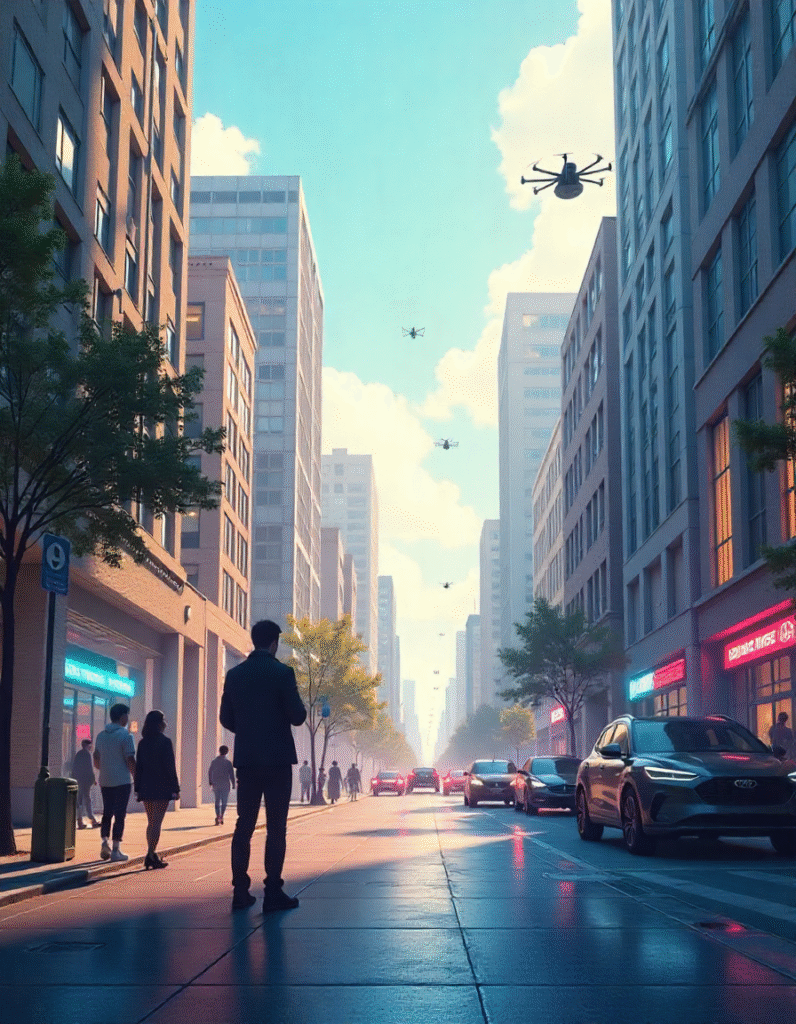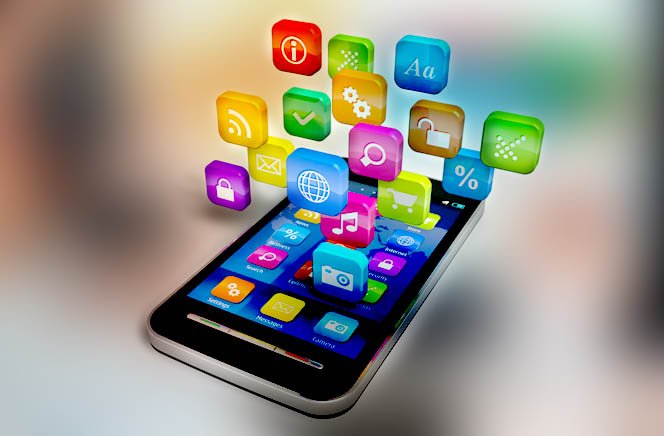Technology is rarely static. It morphs, evolves, and often redefines entire industries in less time than it takes for a startup to mature. As we navigate the 2020s, several movements within the technology sector are converging, setting the stage for significant societal, economic, and cultural shifts. While some trends have been bubbling for years, others have emerged almost overnight, driven by breakthroughs, market demands, or unexpected events.
This exploration dives into the key forces shaping tomorrow’s technological world — from invisible computing to resilient energy systems — and how they might influence everyday life.
1. The Quiet Rise of Ambient Computing
Not so long ago, interaction with a computer meant sitting in front of a screen, typing on a keyboard, and navigating through menus. Today, the concept of “using” technology is dissolving into the background of our lives. Ambient computing — where devices and systems blend seamlessly into our surroundings — is slowly becoming the norm.
Consider the proliferation of voice assistants embedded not just in phones, but in cars, kitchen appliances, and even hotel rooms. Smart sensors in buildings adjust temperature and lighting without human input. Wearables are shifting from obvious gadgets to almost invisible fabrics woven into clothing. In the near future, you may not even notice the technology at work — but it will be there, interpreting context and quietly making adjustments.
The biggest challenge? Balancing convenience with privacy. As devices become more perceptive, the amount of personal data they collect grows. The next leap in ambient systems will depend on solving the tension between personalization and security.
2. Decentralized Infrastructure and the New Internet
The internet we know today is dominated by a handful of major platforms. However, cracks are forming in that model. Decentralized networks — powered by blockchain-like architectures — are attracting developers and communities that seek resilience, transparency, and autonomy.
This isn’t just about cryptocurrencies or speculative digital assets. Distributed storage networks, decentralized identity systems, and peer-to-peer content delivery models are reshaping how online services are built. In a decentralized web, your data isn’t locked inside a single company’s server farm; instead, it’s fragmented and encrypted across a network of independent nodes.
Such infrastructure could make the internet more resistant to censorship and single points of failure. However, decentralization also comes with hurdles — such as slower performance, user adoption barriers, and regulatory pushback.
3. Edge Computing: Bringing Processing Power Closer to You
The explosion of connected devices has exposed a weakness in cloud computing: latency. For applications like autonomous driving, remote surgery, or immersive augmented reality, waiting for data to travel to distant data centers and back is simply too slow. Enter edge computing.
Edge computing shifts the workload closer to the source of the data — whether that’s a 5G tower, a local server in a factory, or a chip inside your smartwatch. This dramatically reduces response times and bandwidth consumption.
In industrial settings, edge processing allows machinery to detect faults instantly, preventing costly downtime. In cities, it enables real-time traffic management and environmental monitoring. The global build-out of 5G networks is accelerating the move toward edge-powered systems, and the combination could redefine expectations for digital responsiveness.
4. Sustainable Tech and the Race for Energy Efficiency
As climate pressures mount, technology’s carbon footprint is coming under scrutiny. The data centers that keep our online lives humming consume enormous amounts of power. Similarly, manufacturing electronics requires rare minerals and energy-intensive processes.
To counter this, innovators are pursuing more energy-efficient chips, recyclable electronics, and software optimization techniques that reduce computational overhead. Renewable energy integration is also a priority — from solar-powered cell towers in rural regions to wind-powered data centers in coastal areas.
An emerging trend is the concept of “digital sobriety” — a movement encouraging individuals and businesses to consciously reduce unnecessary digital activity, much like reducing physical waste. While this might seem counterintuitive in a tech-driven economy, the idea has gained traction among sustainability advocates.
5. The Blurring Line Between Physical and Digital Worlds
Augmented reality (AR) and virtual reality (VR) have long been hyped as “next big things,” but the real transformation may come from their merger into mixed reality (MR). With advances in optics, spatial computing, and haptic feedback, MR systems are making it possible to interact with digital objects as if they were truly there.
For instance, architects can walk clients through life-sized virtual models of buildings before construction begins. Medical students can practice surgeries in realistic, risk-free environments. Field technicians can overlay repair instructions directly onto complex machinery.
The coming decade may see MR headsets shrink in size and cost, making them as commonplace as smartphones. When that happens, the boundaries between what’s physical and what’s digital will become increasingly irrelevant.
6. Hyper-Personalized Healthcare
Healthcare is entering an era where treatment is moving away from generalized protocols toward precision medicine — therapies tailored to an individual’s genetic profile, lifestyle, and real-time health data. Wearable biosensors, home diagnostic kits, and connected medical devices feed streams of data into advanced analytics platforms, enabling doctors to catch potential issues long before symptoms appear.
One of the most promising developments is the integration of genomics with treatment planning. By understanding a patient’s unique DNA makeup, physicians can choose medications that are more likely to work and less likely to cause side effects.
The greatest obstacle remains data privacy and interoperability between healthcare systems. Without secure and standardized ways to share this information, the full benefits of hyper-personalized care will remain out of reach.
7. Robotics Moving into Everyday Spaces
Robots are no longer confined to factory floors. Advances in machine vision, mobility, and soft robotics have opened the door for machines that can operate safely in human environments.
In retail, autonomous robots restock shelves and handle inventory checks. In agriculture, drones and ground robots manage crops with centimeter-level precision. Domestic robots are moving beyond simple vacuuming to tasks like lawn mowing, cooking assistance, and elderly care.
The success of everyday robotics will depend not only on hardware sophistication but also on public trust and cost reduction. People need to feel safe sharing their homes and workplaces with these systems — a challenge as much psychological as technical.
8. Cybersecurity in the Age of Hyperconnectivity
With billions of devices coming online, the attack surface for cyber threats has grown exponentially. Traditional security measures — such as firewalls and password protection — are no longer sufficient.
Emerging defenses include zero-trust architectures, where no device or user is automatically trusted, even if they are inside the network perimeter. Behavioral analytics can detect unusual activity patterns, flagging potential breaches in real time.
The most difficult element to secure, however, remains human behavior. Phishing attacks, social engineering, and poor password habits still account for a large percentage of breaches. The next evolution in cybersecurity may be less about building higher walls and more about fostering a culture of security awareness.
Looking Ahead
Technological progress is neither purely positive nor purely negative — it’s a set of tools whose value depends on how they are used. The developments unfolding now will not only impact economies and industries, but also reshape our daily habits, interactions, and expectations.
The next decade will demand more than technical skill. It will require thoughtful governance, ethical foresight, and a commitment to inclusivity in innovation. As the physical and digital worlds intertwine, and as systems grow more autonomous and intelligent, society’s ability to guide these changes responsibly will determine whether technology becomes a liberating force — or an unmanageable one.




















